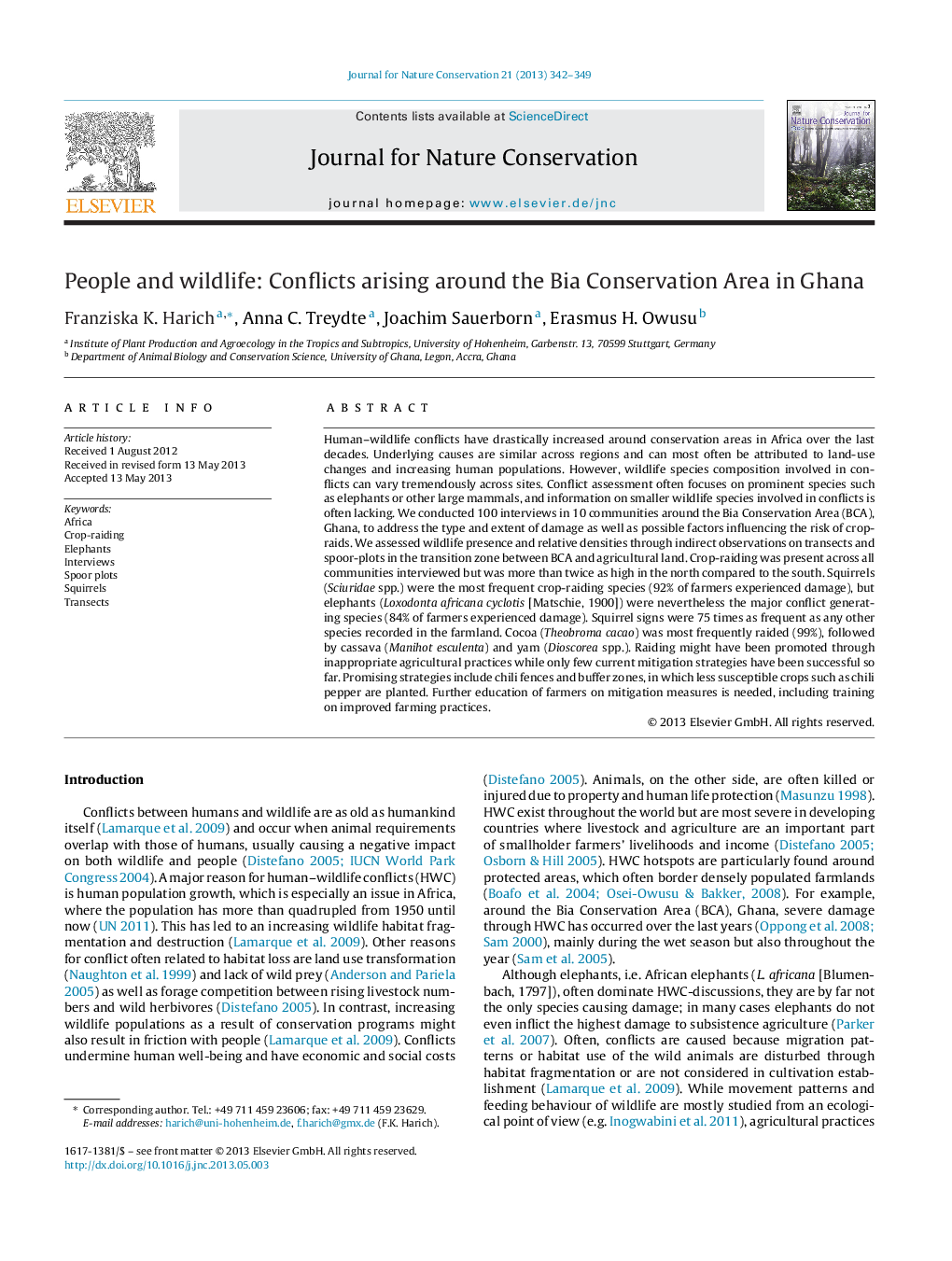| Article ID | Journal | Published Year | Pages | File Type |
|---|---|---|---|---|
| 4399887 | Journal for Nature Conservation | 2013 | 8 Pages |
Abstract
Human-wildlife conflicts have drastically increased around conservation areas in Africa over the last decades. Underlying causes are similar across regions and can most often be attributed to land-use changes and increasing human populations. However, wildlife species composition involved in conflicts can vary tremendously across sites. Conflict assessment often focuses on prominent species such as elephants or other large mammals, and information on smaller wildlife species involved in conflicts is often lacking. We conducted 100 interviews in 10 communities around the Bia Conservation Area (BCA), Ghana, to address the type and extent of damage as well as possible factors influencing the risk of crop-raids. We assessed wildlife presence and relative densities through indirect observations on transects and spoor-plots in the transition zone between BCA and agricultural land. Crop-raiding was present across all communities interviewed but was more than twice as high in the north compared to the south. Squirrels (Sciuridae spp.) were the most frequent crop-raiding species (92% of farmers experienced damage), but elephants (Loxodonta africana cyclotis [Matschie, 1900]) were nevertheless the major conflict generating species (84% of farmers experienced damage). Squirrel signs were 75 times as frequent as any other species recorded in the farmland. Cocoa (Theobroma cacao) was most frequently raided (99%), followed by cassava (Manihot esculenta) and yam (Dioscorea spp.). Raiding might have been promoted through inappropriate agricultural practices while only few current mitigation strategies have been successful so far. Promising strategies include chili fences and buffer zones, in which less susceptible crops such as chili pepper are planted. Further education of farmers on mitigation measures is needed, including training on improved farming practices.
Related Topics
Physical Sciences and Engineering
Earth and Planetary Sciences
Earth and Planetary Sciences (General)
Authors
Franziska K. Harich, Anna C. Treydte, Joachim Sauerborn, Erasmus H. Owusu,
